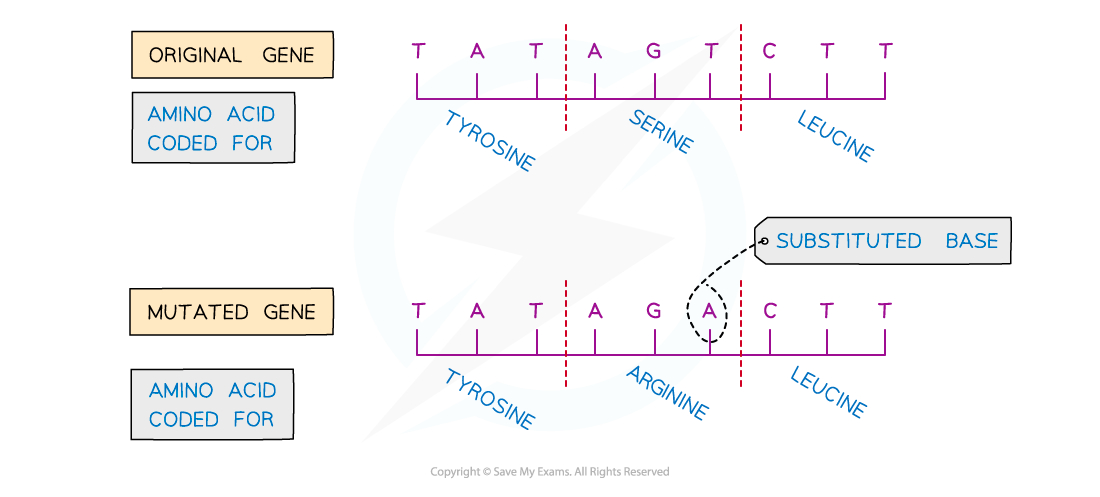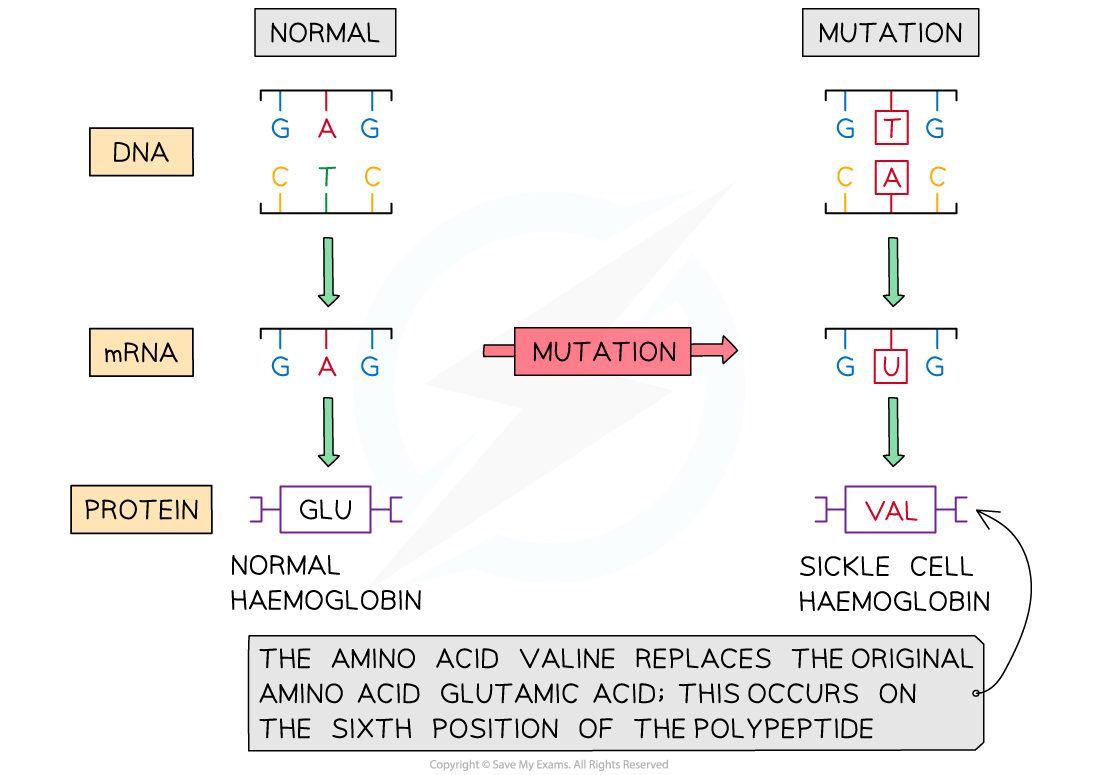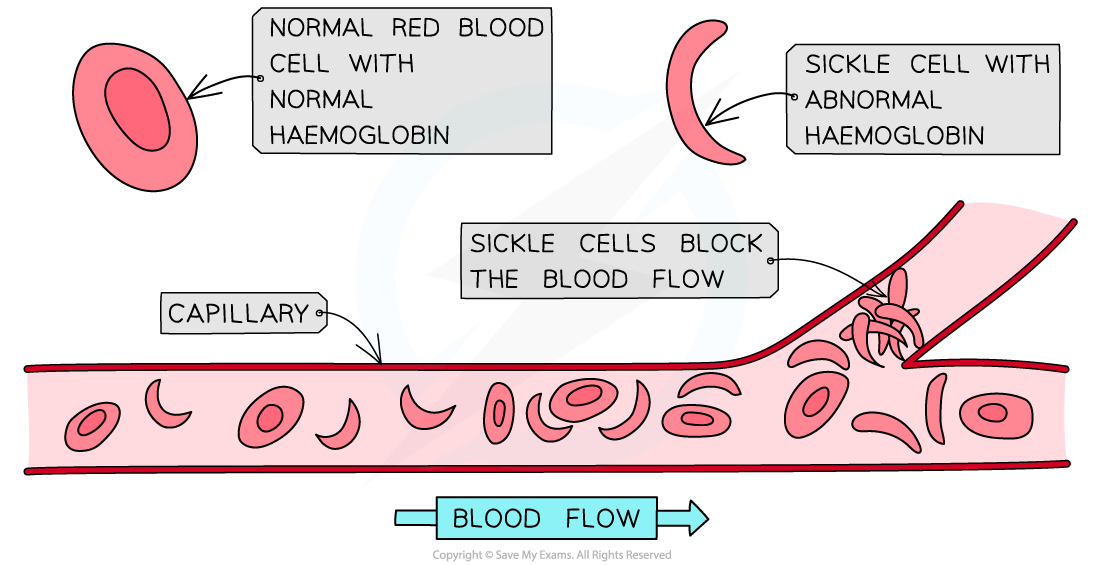Mutation
- A gene mutation is a change in the sequence of base pairs in a DNA molecule; this may result in a new allele
- Mutations occur all the time and at random
- There are certain points in the cell cycle when mutations are more likely to occur, for example, copying errors when DNA is being replicated (S phase of interphase)
- As the DNA base sequence determines the sequence of amino acids that make up a polypeptide, mutations in a gene can sometimes lead to a change in the polypeptide that the gene codes for
- Most mutations are harmful or neutral (have no effect) but some can be beneficial
- Inheritance of mutations:
- Mutations present in normal body cells are not inherited, they are eliminated from the population once those cells die
- Mutations within gametes are inherited by offspring, possibly causing genetic disease
Substitution mutations
- A mutation that occurs when a base in the DNA sequence is randomly swapped for a different base is known as a substitution mutation
- A substitution mutation will only change the amino acid for the triplet (group of three consecutive bases) where the mutation occurs; it will not have a knock-on effect further along the gene/polypeptide

An example of a substitution mutation altering the sequence of amino acids in the polypeptide
Exam Tip
You don't need to know about deletions, insertions and frameshift mutations - just substitution mutations!
Sickle Cell Anaemia
- A small change to a gene can have serious consequences for an organism
- Sickle cell anaemia is a genetic disease caused by a single base substitution mutation within the gene (Hb) that codes for the alpha-globin polypeptide in haemoglobin
- Most humans have the normal allele HbA
The mutation that occurs
- Within the haemoglobin gene, the base thymine (T) is replaced by the base adenine (A). This causes the DNA triplet GAG to mutate to GTG
- The mutated DNA codon GTG is transcribed into the mRNA codon GUG, instead of GAG
- During translation the amino acid valine (VAL) replaces the original amino acid glutamic acid (GLU); this occurs on the sixth position of the polypeptide
- The slightly different polypeptide results in a new allele, HbS

A base substitution on the DNA molecule results in a change in the amino acid at position 6 of the haemoglobin polypeptide, altering the overall structure and function of the protein
The effects
- The protein haemoglobin S is produced instead of haemoglobin A; this causes a distortion in the shape of the red blood cells into sickle shapes
- Sickle-shaped red blood cells:
- Have a limited oxygen-carrying capacity
- Block the capillaries limiting the flow of normal red blood cells
- People with sickle cell anaemia suffer from acute pain, fatigue and anaemia
- There is a correlation between sickle cell anaemia and malaria
- In areas with increased malaria cases, there is an increased frequency of sickle cell alleles

Normal red blood cells and sickle cell blood cells. The sickle cells cause a blockage in the capillary, restricting blood flow.
